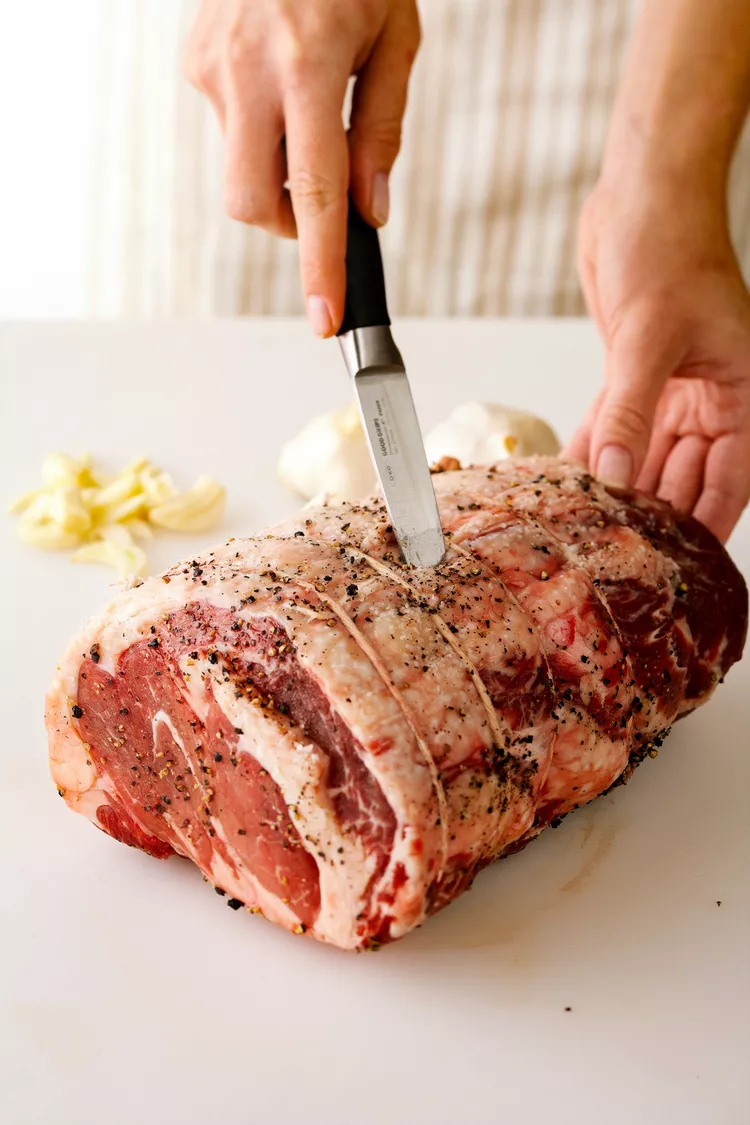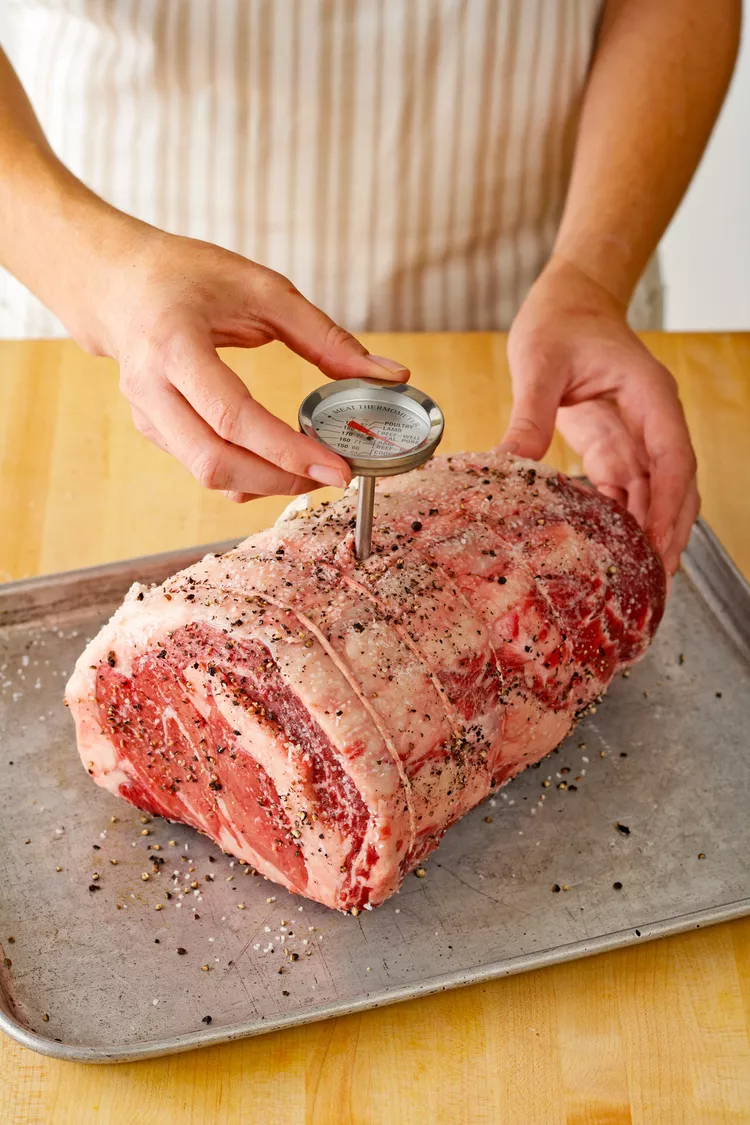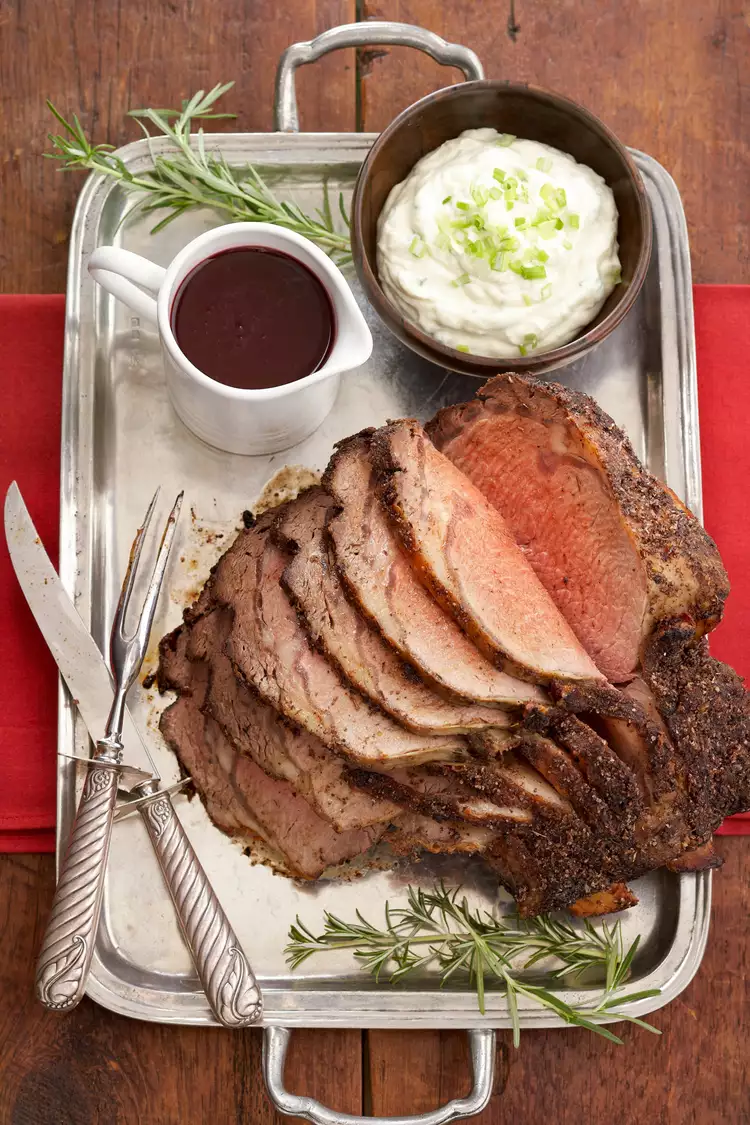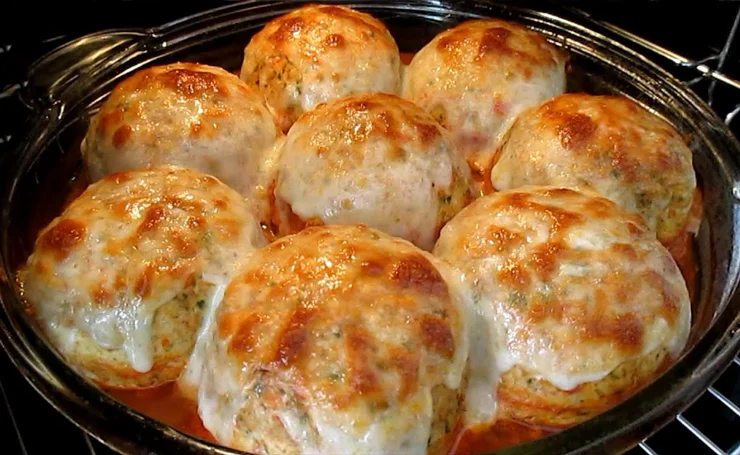
Perfect Prime Rib Roast – Learn how to buy, prep, and roast this top cut of beef for a restaurant-worthy meal.
Prime rib is basically a fancy term for a beef rib roast or standing rib roast. This particular cut of beef is absolutely fantastic when it comes to roasting, and it’s considered to be one of the crème de la crème choices out there.
What makes prime rib extra special is the fact that it still has those juicy rib bones intact. And let me tell you, those bones do wonders for adding incredible flavor to the meat while it’s cooking. Plus, they act as a natural rack, elevating the roast and allowing it to cook perfectly.
Now, here’s a nifty trick to make carving a breeze. Simply ask your friendly neighborhood butcher to separate the rack from the roast. Hang on to that rack because we’ll be putting it back to good use! Use some trusty kitchen string to tie the roast back to the ribs, creating a neat package for roasting. When the time comes, all you have to do is cut those strings and remove the bones before slicing up your succulent prime rib.
If you’re eager to master the art of cooking a flawless rib roast, fear not! I’ve got you covered with a bunch of helpful tips. From selecting the right cut at the store to achieving that picture-perfect carving, I’ll show and guide you through every step of the way. So, get ready to elevate your roast game to a whole new level!
Step 1: Buying Your Prime Rib Roast
When purchasing your prime rib roast, figure about 2 to 3 servings per 1 pound of meat (about two servings per rib). Rib roasts vary in size from 4 to 10 pounds. If possible, order your roast ahead, especially during the holidays, when prime rib roasts are especially popular. Remember to ask for the rack (or chine bone) removed for easier slicing, if you like. As with selecting all kinds of beef, look for beef that has a fresh pink/red color.
Test Kitchen Tip: The name “prime rib” is a little misleading because the beef may not be prime grade, which is the highest USDA beef grade with the most marbling. Choice, the most common grade found at the market, has a little less marbling, but will still be juicy and flavorful.
Step 2: Preparing the Prime Rib
Preparing prime rib for cooking can be as simple as sprinkling it with salt and pepper or rubbing it with olive oil and a dry spice rub. Another easy way to add flavor is to stud the roast with garlic. Using the tip of a small knife poke several 1-inch-deep slits randomly over the roast. Cut 2 or 3 garlic cloves into 6 to 8 lengthwise slivers, and tuck the slivers into the slits.
Place the roast, fat side up, in a 15½ x 10½ x 2-inch roasting pan. Insert an oven-going thermometer into the center of the roast, making sure it does not touch the bone or the pan.
Test Kitchen Tip: If you don’t have an oven-going thermometer, use an instant-read thermometer inserted into the thickest portion of the roast to test the temperature (do not keep this kind of thermometer in the roast during cooking). Keeping a close eye on internal temperature is how you know exactly how long to cook prime rib without overcooking it.
Step 3: Cooking Prime Rib
What’s the best way to cook prime rib roast? It’s right in the name—roast it! Cooking time will depend on the size of your roast and the prime rib temp you like best. Use these guidelines for how long to cook prime rib roast to your perfect doneness.
Roast the meat, uncovered at 350°F, until the desired doneness.
- 4 to 6 pounds: roast 1¾ to 2¼ hours for medium rare (135°F) or 2¼ to 2¾ hours for medium (150°F)
- 6 to 8 pounds: roast 2¼ to 2½ hours for medium rare (135°F) or 2¾ to 3 hours for medium (150°F)
- 8 to 10 pounds*: roast 2½ to 3 hours for medium rare (135°F) or 3 to 3½ hours for medium (150°F)
Test Kitchen Tip: Roasts weighing more than 8 pounds should be loosely covered with foil halfway through roasting
After removing the roast from the oven, transfer it to a cutting board. Cover the meat with foil and let stand for 15 minutes. This allows the juices to redistribute, preventing them from draining out during carving. The meat temperature will rise about 10°F while it stands (the timings and temperatures listed above allow for this). This is key to a perfect prime rib roast; you don’t want it to get overcooked and dry so take it out of the oven 10 degrees early.
Step 4: Carving Prime Rib Roast
On a cutting board, turn the roast on its side; remove a thin bottom slice if needed to stabilize the roast on a flat surface. Insert a large fork in the side of the roast, below the top rib. Carve across the front toward the rib bone. Cut along the rib bone with the tip of the knife to release the slice from the bone. Remove the slice and transfer it to a platter. Repeat with remaining slices.
Storage Tip: Refrigerate leftover meat for up to 3 days. Use it to make warm or cold beef sandwiches on buns or dinner rolls spread with horseradish mayonnaise.









